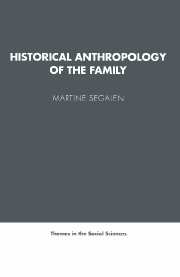6 - THE CHILD AND THE FAMILY
Published online by Cambridge University Press: 14 January 2010
Summary
This chapter is about the link between the number of children and family attitudes and, more generally, relationships between parents and children. ‘Family’ is used here in its most restricted sense, that of the conjugal cell made up by marriage or its extension and/or the children produced by it. It will nevertheless be impossible to keep discussion within those strict bounds, for models of procreation and upbringing, although they both, especially the former, seem to stem from the most intimate and personal aspects of our lives, also have links with social relationships at the level of the family and of professional life. Chapter 10, on relationships between the family and society, is concerned with questions of this kind, but we will also discuss them briefly here.
Our interest in that third being to whom two others give life will not simply be an interest in the new-born child closely dependent on others for all needs. We will also sketch in a history of adolescence and try to show what changes there have also been in relationships between parents and their older children. The dynamic aspect is important and will be the major one here.
Although psychoanalysis is of considerable importance in this area, we will not make much reference to that aspect of parent–child relationships, as it lies on the boundaries of our own field of scientific investigation. Several ways of filling the resulting gap are indicated in the Suggested Reading section at the end of this chapter.
We will also use the past as a point of reference in our efforts to understand parental relationships in our own age.
- Type
- Chapter
- Information
- Historical Anthropology of the Family , pp. 159 - 198Publisher: Cambridge University PressPrint publication year: 1986

